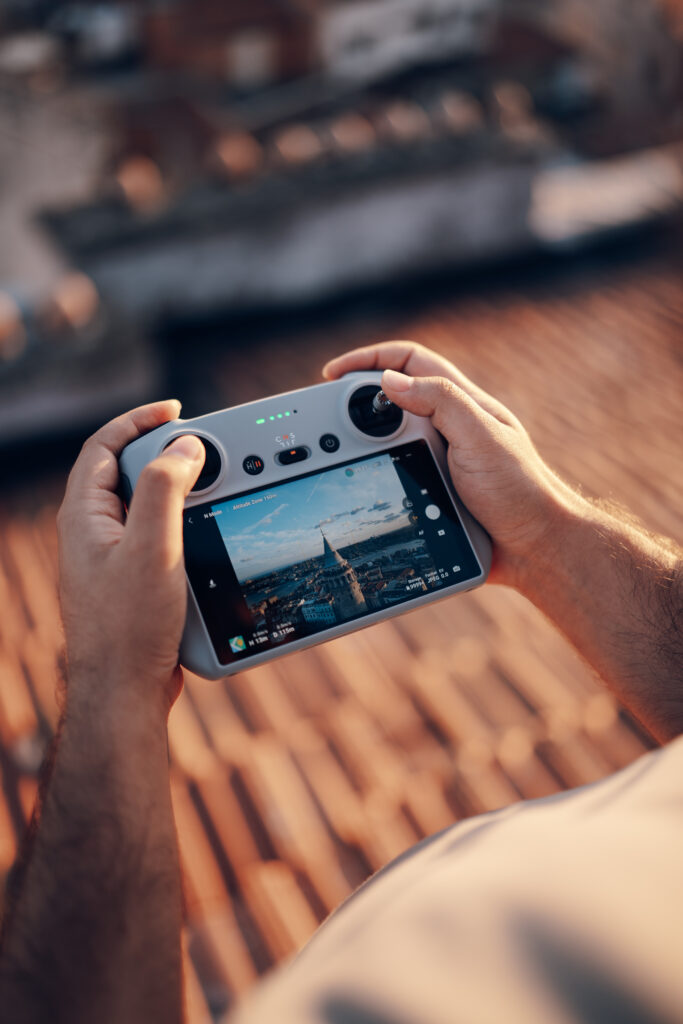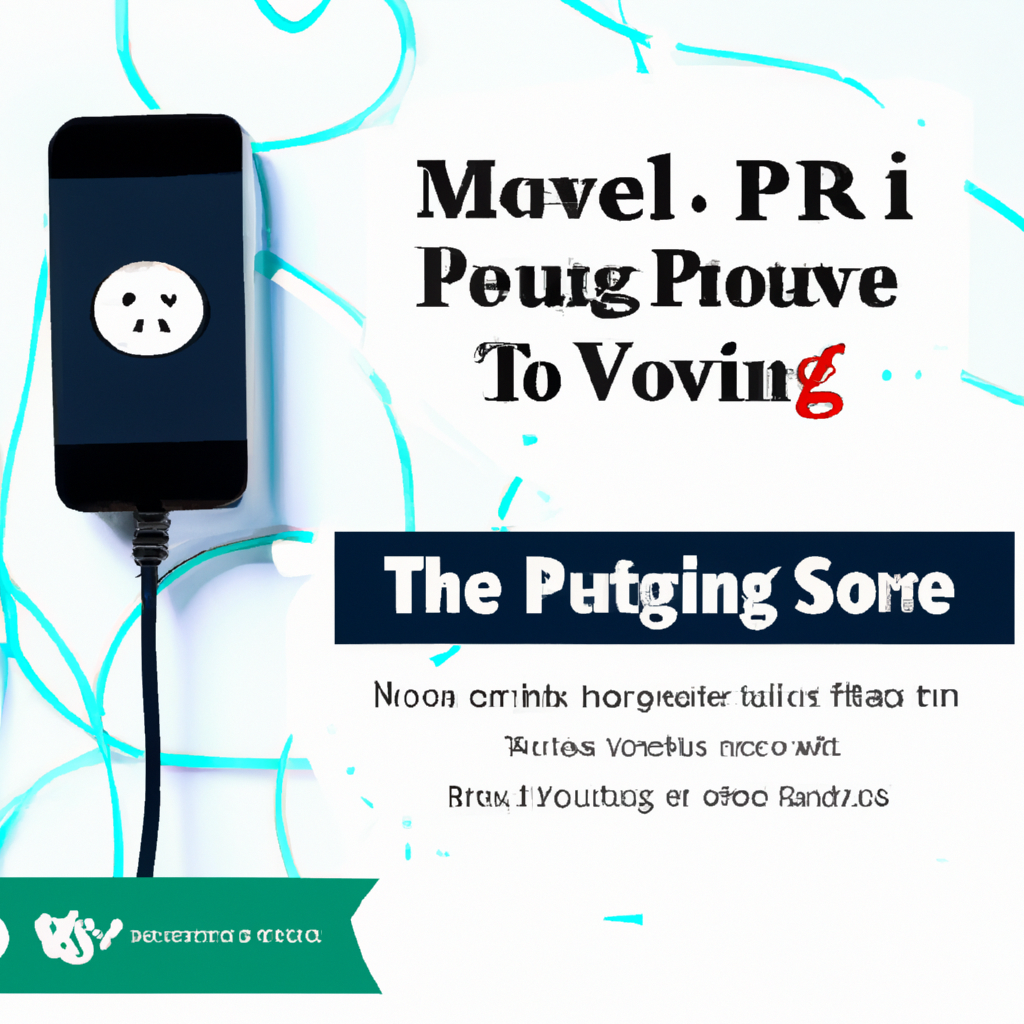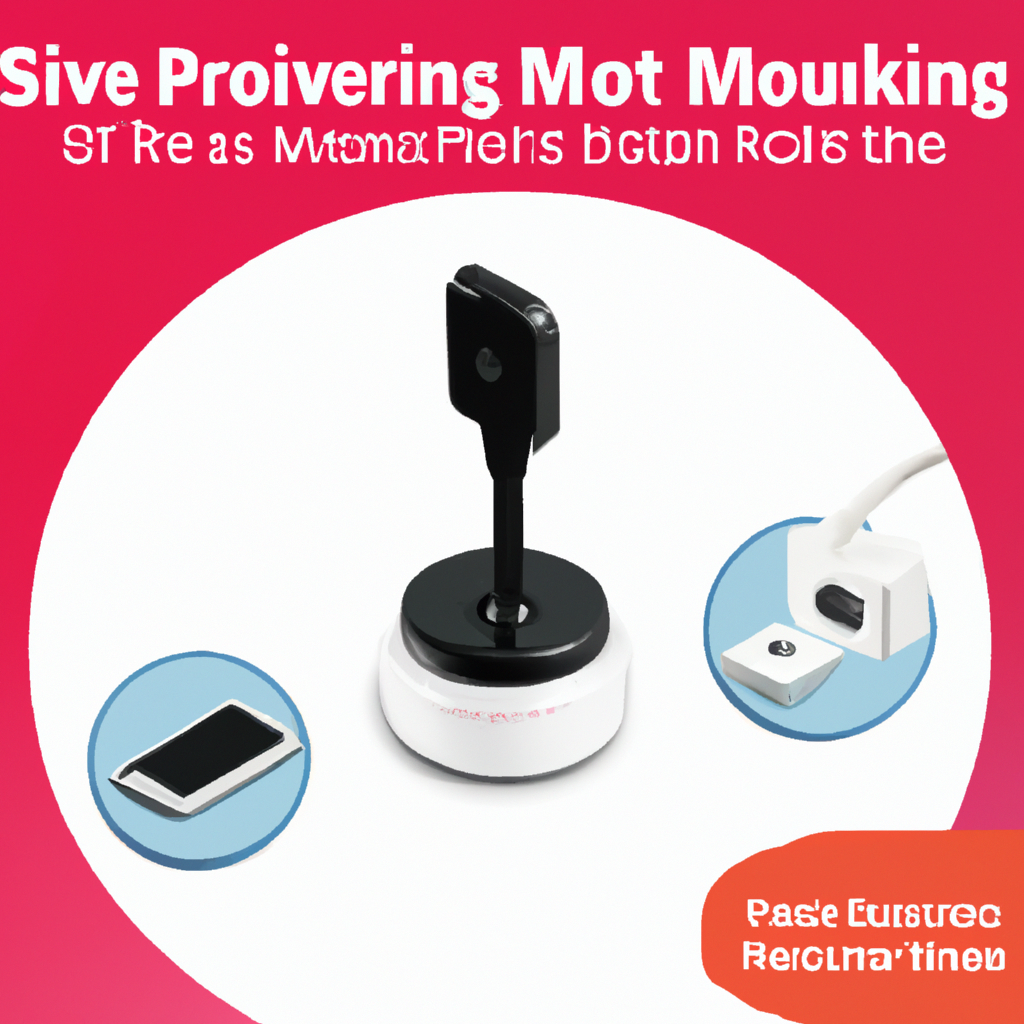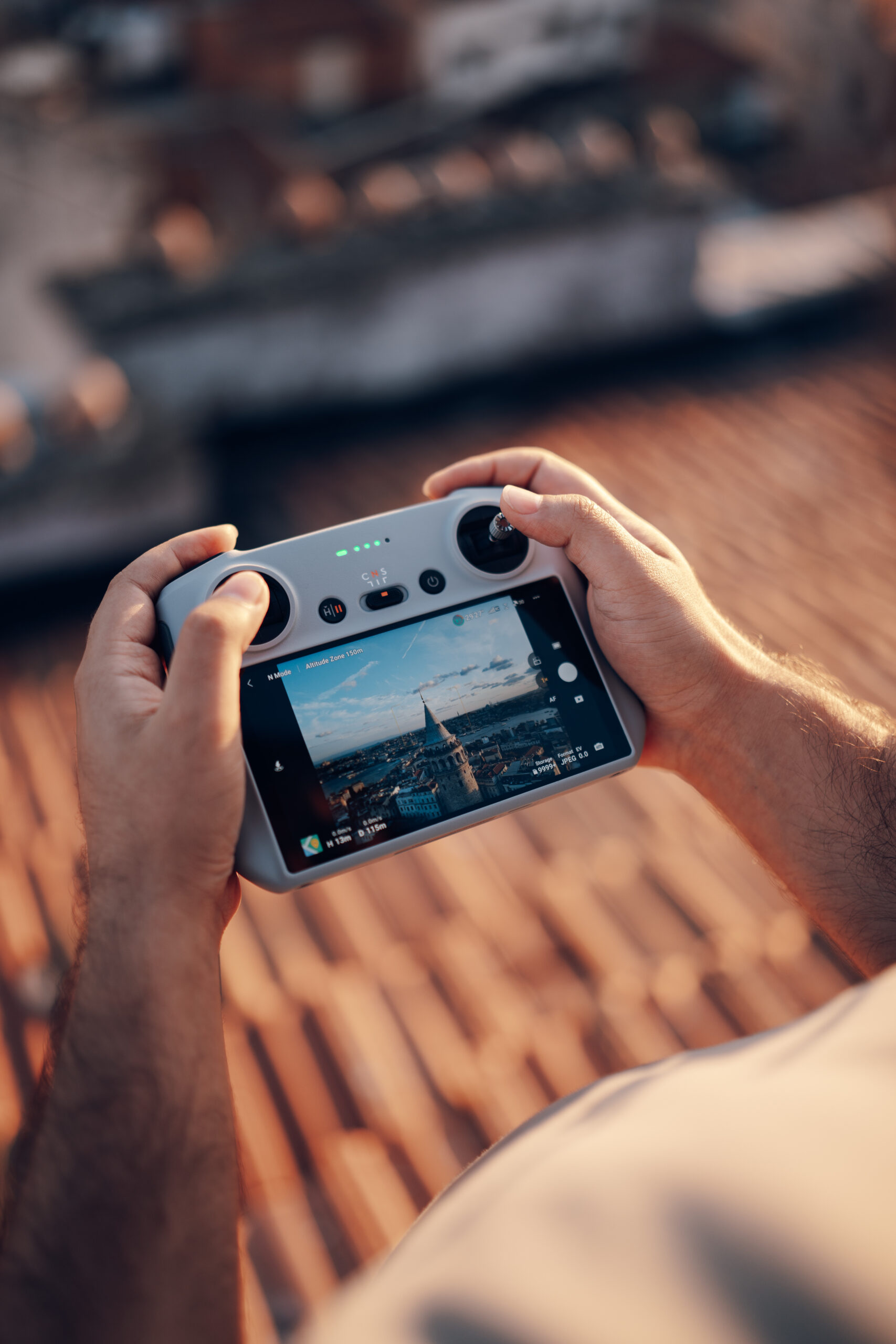Imagine the convenience of being able to control your appliances from anywhere, at any time. With smart plugs, this level of control is now a reality. Whether you want to turn off a forgotten iron or set a schedule for your coffee maker to start brewing in the morning, smart plugs can make it happen. These innovative devices allow you to remotely control and schedule appliances, giving you peace of mind and making your daily routines a breeze. Say goodbye to worrying about leaving appliances on and hello to the future of home automation with smart plugs.
What are smart plugs?
Smart plugs are devices that can be plugged into any standard electrical outlet, enabling you to control and automate the power supply to appliances and electronics. These innovative devices connect to your home’s Wi-Fi network, allowing you to monitor and control them remotely using a mobile app or voice commands.
Definition of smart plugs
Smart plugs, also known as smart sockets or smart outlets, are compact devices that serve as an interface between your electrical outlets and your appliances. They provide convenience by allowing you to control your appliances remotely, monitor their energy usage, and even schedule their operation. Smart plugs are an integral part of the growing ecosystem of smart home technology.
How smart plugs work
Smart plugs work by connecting to your home network via Wi-Fi or Bluetooth. Once connected, they can be controlled and monitored from anywhere using a smartphone app or via voice commands to a smart speaker. When a smart plug is connected to an appliance, you can turn it on or off, set schedules, and even monitor its energy consumption. Smart plugs work by interrupting the flow of electricity to the connected appliance, providing you with control over its power supply.
Types of smart plugs
There are several types of smart plugs available in the market, offering a range of features to suit different needs. The most common types include Wi-Fi smart plugs, which connect directly to your home network, and Bluetooth smart plugs, which require proximity to your smartphone or a central hub. Some smart plugs are designed to be compatible with specific virtual assistants or smart home systems, while others offer additional features like energy monitoring or surge protection.
Benefits of using smart plugs
Using smart plugs in your home can provide numerous benefits, enhancing convenience, energy efficiency, safety, and integration within your smart home ecosystem.
Remote appliance control
One of the key benefits of smart plugs is the ability to control your appliances remotely. Whether you forgot to turn off the lights before leaving home or want to turn on the air conditioner before you arrive, smart plugs allow you to control your appliances from anywhere using your smartphone. This feature provides convenience and peace of mind, knowing that you can always monitor and manage your devices even when you’re not at home.
Energy efficiency
Smart plugs can contribute to energy efficiency by reducing standby power consumption. Standby power, also known as vampire power, refers to the energy consumed by appliances when they are plugged in but not in use. With smart plugs, you can easily turn off appliances and electronics when they are not needed, reducing wasted energy and lowering your electricity bill. Additionally, some smart plugs offer energy monitoring capabilities, allowing you to track and analyze the energy usage of your appliances, providing valuable insights for conservation.
Safety and convenience
Smart plugs offer enhanced safety by helping to prevent electrical hazards. By remotely controlling your appliances, you can avoid leaving devices on for extended periods, reducing the risk of electrical fires or damage. Smart plugs also provide convenience by allowing you to create customizable schedules for your appliances. You can set specific times for devices to turn on or off, ensuring that your coffee machine starts brewing as soon as you wake up or that your lights automatically switch on when you arrive home.
Integration with smart home systems
Smart plugs can seamlessly integrate with other smart home systems and devices, creating a cohesive and user-friendly experience. Many smart plugs are compatible with popular virtual assistants such as Amazon Alexa or Google Assistant, allowing you to control your appliances using voice commands. These integrations enable you to create automated scenes where multiple devices can be controlled simultaneously, enhancing the overall functionality of your smart home ecosystem.

Features of smart plugs
Smart plugs come equipped with various features that enhance their functionality, ease of use, and compatibility with different appliances.
Wireless connectivity
Smart plugs connect to your home network using either Wi-Fi or Bluetooth technology. Wi-Fi smart plugs offer greater flexibility by allowing you to control your devices remotely from anywhere with an internet connection. Bluetooth smart plugs, on the other hand, require proximity to your smartphone or a central hub for control. Both options provide wireless convenience and eliminate the need for additional wiring or complicated installations.
Mobile app control
Most smart plugs come with a dedicated mobile app that allows you to control and monitor your appliances from your smartphone or tablet. Through the app, you can turn appliances on or off, set schedules, monitor energy usage, and even receive notifications or alerts. The intuitive interface of these apps makes it easy for users to set up and manage their smart plugs, providing a seamless user experience.
Voice control
Many smart plugs are compatible with popular virtual assistants such as Amazon Alexa, Google Assistant, or Apple Siri. This compatibility enables you to control your appliances using voice commands, providing a hands-free and convenient experience. Simply ask your virtual assistant to turn on the coffee maker or switch off the TV, and it will relay the command to the smart plug, executing your desired action.
Scheduling options
Smart plugs offer scheduling options that allow you to set specific times for appliances to turn on or off. This feature is particularly handy for devices that you use on a regular schedule, such as lights, coffee makers, or even heaters. By setting up schedules, you can ensure that your appliances are ready when you need them and conserve energy when they are not in use.
Energy monitoring
Some smart plugs come with built-in energy monitoring capabilities, allowing you to track and analyze the energy usage of your appliances. Through the mobile app or a web interface, you can view real-time and historical data, giving you insights into your energy consumption patterns. This information can help you make informed decisions about energy-saving practices and identify appliances that are consuming excessive energy.
Away mode
Smart plugs with an “Away” mode feature can simulate occupancy when you’re not at home. By randomly turning lights or other devices on and off, smart plugs give the appearance that someone is home, deterring potential burglars. This feature adds an extra layer of security and peace of mind, especially when you’re away for extended periods.
Integration with virtual assistants
As mentioned earlier, many smart plugs are compatible with popular virtual assistants such as Amazon Alexa, Google Assistant, or Apple Siri. This integration allows you to control your appliances through your virtual assistant by simply using voice commands. Whether you want to dim the lights, turn on the fan, or start brewing your morning coffee, your virtual assistant can communicate with the smart plug to execute your desired actions.
Compatibility with different appliances
Smart plugs are designed to be compatible with a wide range of appliances and electronics. From lamps and fans to coffee makers and televisions, you can use smart plugs with virtually any device that plugs into a standard electrical outlet. However, it’s important to ensure compatibility and safety precautions for specific appliances that may have unique electrical requirements or limitations.
Remote appliance control
The remote appliance control feature is one of the most beneficial aspects of using smart plugs. By allowing you to control appliances from anywhere, smart plugs offer convenience, peace of mind, and energy-saving opportunities.
Controlling appliances from anywhere
With smart plugs, you are no longer limited to controlling your appliances from within your home. Whether you’re at work, on vacation, or simply in another room, you can easily manage your appliances using the mobile app or voice commands. Forgot to turn off the iron? No problem. Want to warm up your home before you arrive? Consider it done. The ability to control appliances remotely gives you greater control over your household devices and simplifies your daily routines.
Turning appliances on/off remotely
Smart plugs make it easy to turn appliances on or off remotely, eliminating the need for manual intervention. Whether you want to turn off the lights that were accidentally left on or turn on the slow cooker to start preparing dinner, you can do so with a single tap on your smartphone. This feature saves you time and effort by providing instant control over your appliances, even when you’re not physically present.
Monitoring appliance status
Smart plugs also offer the ability to monitor the status of your appliances remotely. Through the mobile app, you can check whether an appliance is currently turned on or off, providing you with real-time information about its operation. This feature allows you to ensure that appliances are functioning as intended and gives you the peace of mind that everything is under control, even when you’re away from home.

Energy efficiency
Smart plugs contribute to energy efficiency in several ways, helping you reduce your energy consumption and lower your electricity bills.
Reducing standby power consumption
One of the largest sources of wasted energy in households is standby power consumption. Many appliances continue to consume electricity even when they are not actively in use, such as TVs, game consoles, or chargers. By using smart plugs to turn off these appliances completely when not needed, you can eliminate standby power consumption and reduce energy waste significantly. This not only saves you money but also helps in reducing your carbon footprint.
Setting timers for appliances
Smart plugs allow you to set timers for your appliances, enabling you to control their operation duration. For example, you can set a timer for your air conditioner to turn off automatically after a certain period or schedule your coffee maker to start brewing just before you wake up. This feature ensures that appliances are only running when necessary, minimizing unnecessary energy usage and promoting energy efficiency.
Automatically turning off unused devices
With smart plugs, you can program appliances to automatically turn off after a certain period of inactivity. This feature is particularly useful for devices that tend to be left on unintentionally, such as fans or lights. By setting an automatic shut-off time, you can ensure that appliances are not left running unnecessarily, saving energy and reducing your electricity bill.
Energy monitoring and usage insights
Many smart plugs offer energy monitoring capabilities, allowing you to track and analyze the energy usage of your appliances. Through the mobile app or a web interface, you can view real-time and historical data on energy consumption, helping you identify energy-intensive devices and adjust your usage accordingly. This information empowers you to make more informed decisions about energy conservation, helping you reduce waste and promote a more sustainable lifestyle.
Safety and convenience
Smart plugs offer a combination of safety and convenience features that enhance your overall home experience.
Preventing electrical hazards
By providing remote control over your appliances, smart plugs help prevent electrical hazards that can result from leaving devices on when not needed. This feature is particularly useful for appliances that can pose a fire risk, such as heaters, irons, or curling irons. With smart plugs, you can ensure that these devices are turned off promptly, significantly reducing the risk of electrical fires and accidents.
Monitoring power consumption
Smart plugs with energy monitoring capabilities enable you to monitor the power consumption of your appliances in real-time. This feature allows you to keep track of the energy usage patterns of specific devices and identify any anomalies or excessive consumption. By staying informed about your energy consumption, you can make adjustments to your usage habits and potentially reduce your electricity bill.
Creating customizable schedules
The ability to create customizable schedules for your appliances is a convenient feature offered by smart plugs. Whether you want your lights to turn on automatically in the evening or want to program your coffee maker to start brewing in the morning, you can tailor your appliance schedules to match your lifestyle. This customization allows you to automate repetitive tasks and ensures that your appliances are ready when you need them, enhancing your daily routines.
Simulating occupancy while away
Smart plugs with an “Away” mode feature provide an added layer of security by simulating occupancy when you’re away from home. By randomly turning lights or other devices on and off, smart plugs create the illusion that someone is present, deterring potential burglars. This feature adds an extra element of convenience and peace of mind, especially when you’re on vacation or away for extended periods.

Integration with smart home systems
Smart plugs seamlessly integrate with other smart home systems and devices, adding to the overall functionality and convenience of your smart home ecosystem.
Connecting smart plugs to a central hub
Some smart plugs require a central hub, also known as a home automation controller, to connect multiple devices within your home. This central hub acts as a bridge between your smart plugs, virtual assistants, and other smart devices, enabling seamless communication and control. By connecting your smart plugs to a central hub, you can consolidate control and access all your devices from a single interface.
Creating scenes and automation
Smart plugs can be integrated into scenes and automation routines, allowing you to control multiple devices simultaneously. For example, you can create a “Goodnight” scene that turns off all the lights, powers down electronics, and locks doors when you’re ready to sleep. Automation routines can also be set up to trigger specific actions based on certain conditions or events. For instance, you can program your smart plugs to turn on the lights when motion is detected in a particular room. These features enhance the functionality and convenience of your smart home system.
Voice control through a smart speaker
Many smart plugs are compatible with popular virtual assistants like Amazon Alexa, Google Assistant, or Apple Siri. By connecting your smart plugs to a virtual assistant, you can control your appliances using voice commands. Whether you’re turning on the coffee maker, dimming the lights, or adjusting the temperature, you can simply ask your virtual assistant to do it for you, providing a hands-free and effortless experience.
Compatibility with other smart devices
Smart plugs can integrate and communicate with other smart devices within your smart home ecosystem. Whether it’s smart lighting, thermostats, or security systems, smart plugs can work harmoniously with these devices to enhance your overall smart home experience. For example, you can configure your smart plugs to automatically turn off the lights when you lock your front door or have the coffee maker start brewing when your motion sensor detects you entering the kitchen. The seamless integration with other smart devices adds versatility and convenience to your home automation setup.
Wireless connectivity
Smart plugs offer wireless connectivity options that ensure ease of use and flexibility when it comes to controlling your appliances.
Wi-Fi and Bluetooth connectivity
Most smart plugs connect to your home network using Wi-Fi or Bluetooth technology. Wi-Fi smart plugs connect directly to your home’s Wi-Fi network, providing greater range and allowing you to control your appliances from anywhere with an internet connection. Bluetooth smart plugs, on the other hand, utilize Bluetooth technology to connect to your smartphone or a central hub. Bluetooth connectivity offers a more localized range, typically requiring your smartphone to be within close proximity for control.
Setup and pairing process
The setup process for smart plugs is typically straightforward and user-friendly. First, you need to plug in the smart plug and ensure it has power. Then, download and install the manufacturer’s mobile app for the smart plug on your smartphone. Follow the instructions provided by the app to connect the smart plug to your home network or pair it with your smartphone via Bluetooth. Once the setup is complete, you can start controlling your appliances using the app or voice commands.
Range and reliability
Wi-Fi smart plugs offer a greater range compared to Bluetooth smart plugs, typically extending to the range of your home’s Wi-Fi network. This range ensures that you can control your appliances even if you’re not in close proximity to the smart plug. Bluetooth smart plugs, on the other hand, have a more limited range and require your smartphone to be within close proximity for control. The range and reliability of smart plugs primarily depend on the quality of your home network or Bluetooth connection.

Mobile app control
Most smart plugs come with a dedicated mobile app that allows you to control and monitor your appliances with ease.
Downloading and installing the smart plug app
To control your smart plug, you need to download and install the manufacturer’s mobile app on your smartphone or tablet. These apps are typically available for both iOS and Android devices and can be found in their respective app stores. Once you’ve installed the app, follow any on-screen instructions to set up an account or connect the smart plug to your home network.
Connecting and configuring the smart plug
After downloading the app, you need to connect and configure the smart plug within the app. This process typically involves scanning for nearby smart plugs or entering specific identification details to ensure the correct smart plug is being configured. The app will guide you through the necessary steps, which may include connecting to your home Wi-Fi network, naming the smart plug, and assigning it to a specific room or location within your home.
Controlling appliances through the app
Once the smart plug is connected and configured, you can start controlling your appliances through the mobile app. The app provides an intuitive interface that allows you to turn appliances on or off, set schedules, and monitor energy consumption. With a few taps on your smartphone, you can have complete control over your appliances, regardless of your location. Some apps also offer additional features like energy monitoring, scene creation, or integration with other smart devices, providing a comprehensive home control experience.
Compatibility with different appliances
Smart plugs are designed to be compatible with a wide range of appliances and electronics.
Smart plugs for common household appliances
You can use smart plugs with various common household appliances, such as lamps, fans, coffee makers, televisions, chargers, or even Christmas lights. As long as the appliance plugs into a standard electrical outlet, you can use a smart plug to control its power supply. Smart plugs offer an easy and cost-effective way to upgrade your existing appliances to be a part of your smart home ecosystem.
Appliance-specific considerations
While smart plugs can be used with most appliances, it’s important to consider certain appliance-specific factors. For example, appliances with motors, like refrigerators or air conditioners, may require additional precautions due to their power requirements. It’s essential to consult the manufacturer’s guidelines or seek professional advice to ensure the safe usage of smart plugs with these appliances. Additionally, appliances that require constant power supply, such as security systems or refrigerators, may not be suitable for smart plugs as they can be inadvertently turned off.
Safety precautions
When using smart plugs, it’s essential to follow safety precautions to prevent electrical hazards. Ensure that the smart plug and the appliance you are connecting are compatible in terms of voltage and electrical requirements. Avoid overloading the smart plug or using it with appliances that draw excessive power. If you have any doubts or questions, consult a licensed electrician to ensure the safe usage of smart plugs in your home.
Limitations and exceptions
While smart plugs offer great flexibility and compatibility, there are some limitations and exceptions to consider. Some appliances, such as certain types of heaters or high-powered tools, may not be suitable for smart plugs due to their power requirements. Additionally, appliances with electronic controls or internal timers may not work as expected when connected to smart plugs. It’s important to read the product specifications and consult the manufacturer’s guidelines to ensure compatibility and safe usage with specific appliances.











